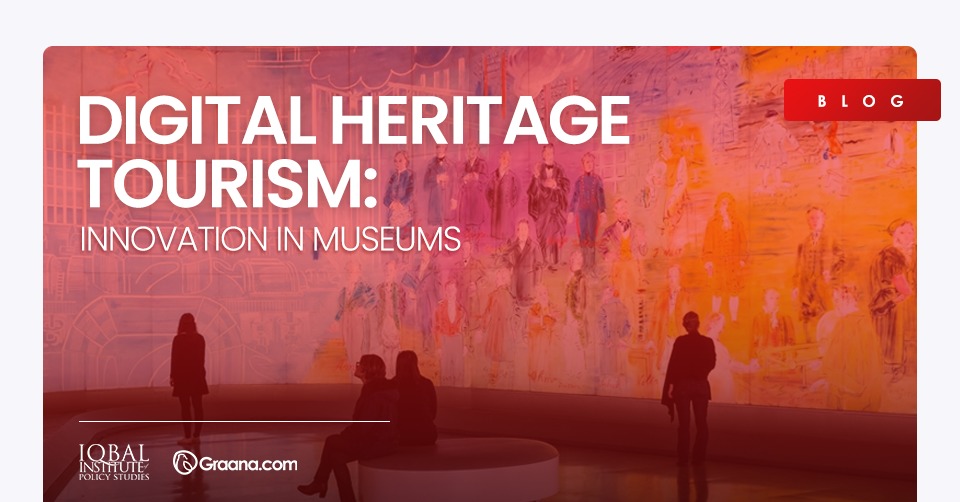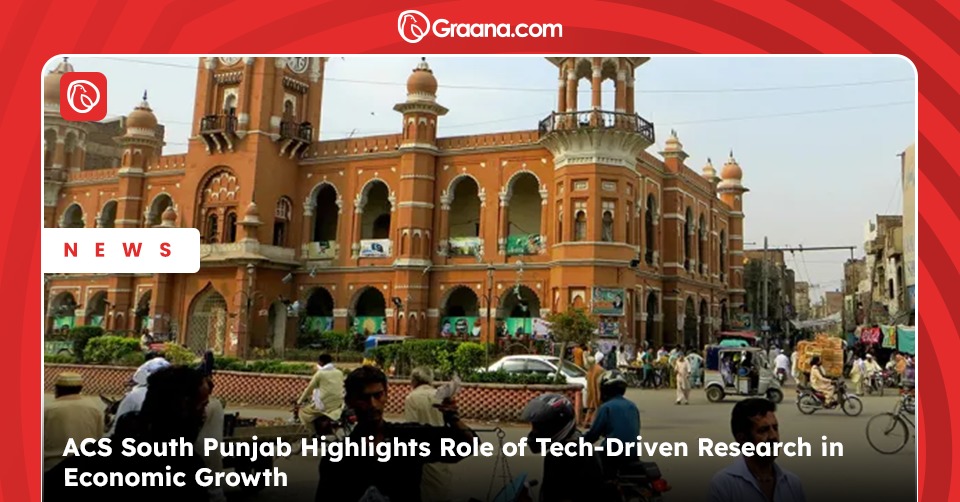Defining Digital Heritage Preservation
The UNESCO Charter has defined Digital heritage as “made up of computer-based material of enduring value that should be kept for future generations. Not all digital materials are of enduring value. Still, only those that require active preservation approaches if continuity of digital heritage is to be maintained”.
The European Project has also defined Digital Preservation as “a set of activities required to preserve digital objects. It should be located, rendered, used and understood in the future”.
As per European Union, “digitisation of monuments or archaeological sites is the exact recording and documenting its geometrical characteristics in a way that reliably represents its geometric form and location in space/area using diagrams, two dimensional (2D) or three dimensional (3D) models with the use of personal computers” (Panos, 2020).
Graana.com, in collaboration with the Iqbal Institute of Policy Studies, discusses digital heritage tourism and the innovation required in museums in Pakistan.
Digital Application in Cultural Heritage Tourism
Digitisation contributes towards conserving heritage and scientific resources; it can encourage tourism. The invention of the World Wide Web has made it easy for heritage tourists to get vast information because it will provide convenient access to the intended destination image.
Heritage tourism has the potential to increase the economic benefit manifold. Oxford Economics has conducted a study which states that heritage tourism (including museums and green spaces) is an industry worth £20.6b annually, with visitors amounting to 164.7m in the United Kingdom and employs 270,000 people in the UK (Abdou, 2019).
The natural and heritage tourism market in developing countries is estimated to be between US $5 to $10 billion annually, growing 20% annually (Organisation of American Studies, 2020).
Virtual Reality (VR) Technology for Heritage Sites
The British Museum conducted its first virtual tour at the conference (Boland & Johnson, 1997). After that, many cultural and natural heritage sites have been digitally reconstructed. Technology innovation allows a full rebuilding of relics of centuries-old heritage to their former glory.
The technology enables virtual access to heritage sites at any time. The experience of users in virtual, augmented and mixed environments can be categorised into three different experiences: non-immersive, semi-immersive and fully immersive. Non-immersive virtual reality systems are used to prepare video and computer games. The semi-immersive environment gives users a more perceptive experience of being connected to the virtual world (Ventura et al., 2019).
However, being fully immersed gives a more realistic and real-life experience. It comprised various features such as a sense of sound using stereo-based, a sense of touch by hand gesture and a sense of motion by using motions.
All three categories of VR/AR can be utilised to enable digital heritage and virtual tourism; however, they have to face some constraints, such as in-depth design, cost-effectiveness, technological evolution and user acceptance (Celtek, 2020).
Virtual Tourism and Digital Heritage
Virtual tourism is a remote application that enables travellers to discover nature, destinations, ruins, attractions, buildings and other tourist destinations without physically visiting. The emerging technology provides a detailed experience. Virtual tours constitute guided teleconferencing, 360-degree photos, virtual and augmented reality, and video tours, and they can interact with culture and art experiences or ancient environments.
The concept of virtual tourism (VT) is becoming familiar due to advancements in new technologies every day. It is deeply rooted in the smart tourism term. As per the Global Virtual Tourism study, 2021 was worth USD 5 billion and will reach USD 24 billion in 2028 (Market data forecast, 2022).
Virtual tourism offers a different level of technical competence and transforms into many forms. In its simplest version, virtual videos only rely on videos of the place of interest. A tourist can use the speakers and a screen to see pictures. The visitor can immerse him/herself into the more sophisticated form using a headset or stimulator. This may involve the usage of multiple technological instruments.
The user may need to wear gloves or use additional sensors, such as motion, proximity, direction, gestures etc. For instance, the virtual museum tour Louvre provides access to Egyptian Antiquities (360 degrees, 2023). In addition, Dubai 360 provides an immersive, awe-inspiring view of Dubai’s modern architecture.
Navarrete (2019) has introduced the definition of digital heritage tourists, i.e., that exists independently of the physical location to explicitly and voluntarily come in contact with the museum’s goods and services online by following the Bonet (2013) heritage tourist definition. In this way, tourists can visit museums online and get information about the place by viewing online catalogues on the website and watching videos and images through social media platforms.
Innovation in Museums
Technology has unleashed new avenues for showcasing architectural sites. The number of museums is transforming and incorporating technology to develop new products and services, for instance, new processes to research, online exhibition, display and manage collections, expanding the reach of their cultural heritage to international markets, and tapping into existing resources to generate new capital.
Innovation in markets and organisations can be enabled by combining existing and new knowledge and resources. The museums can use innovative practices as per their size of it. The smaller can use social media platforms, whereas larger museums can develop high-quality, innovative infrastructure. The innovation in the museum will provide various benefits such as:
- The virtual tours of museums remove constraints of boundaries and time.
- It will increase the visitor’s interest because it may inspire them to visit it physically.
- It allows the artwork to be digitised without fully conversing it.
- It helps blend education with entertainment.
- It allows sharing of live events, art exhibitions and special occasions.
Examples: Digitising Cultural Heritage
The virtual tour of museums brings a surreal experience because one can learn about history and art. Google Art and Culture has worked with more than 1200 galleries and museums to provide everyone with virtual tours and online exhibitions of the world’s most popular museums.
Google Arts and Culture do not include all the museums and galleries; however, many museums, cultural sites, galleries, and even literature sites have created 2D and/or 3D models, which can be experienced through virtual or augmented reality.
The Global Digital Heritage (GDH) is a non-profit organisation that monitors, documents and preserves the global cultural and natural heritage. This program provides an immersive experience to various destinations such as Chateau de La Roche-Guyon in France, the Archaeological Museum of Aidone in Italy, the Bull Ring, the Early Christian Basilica of Sofiana in Italy, and the Necropolis of Jebel al-Buhais in UAE, Sanctuary of the Virgen de Las Nieves in Spain and many more (UNESCO, 2019).
The charter of London aims to revamp the Arts, Humanities and Cultural Heritage discipline using 3D technology. It focuses on the broader picture and includes museums, art galleries, heritage sites, interpretative centres, cultural heritage research institutes and arts to promote tourism.
Why Does Pakistan Needs Virtual Museums?
Pakistan has numerous cultural and heritage sites. These assets disappear with time due to a lack of government attention, funds, and poor regulation and rules. Only Sindh has around 3,000 monuments and heritage sites (Mashar et al., 2022).
The depleting and deteriorating infrastructure will be converse without investing many resources by using technology, and people worldwide will be able to see the ancient culture of Pakistan. This will increase investors’ and tourists’ interest in visiting the places in person.
In 2022, the government had already launched a virtual museum project in collaboration with the British Council. The project aims to connect the world and share centuries-old civilisation (Tribune, 2022). Despite the physical borders, the immersive ecosystem can be an ideal platform for local and global conversation. It will help transcend borders by making knowledge open and accessible to everyone.




